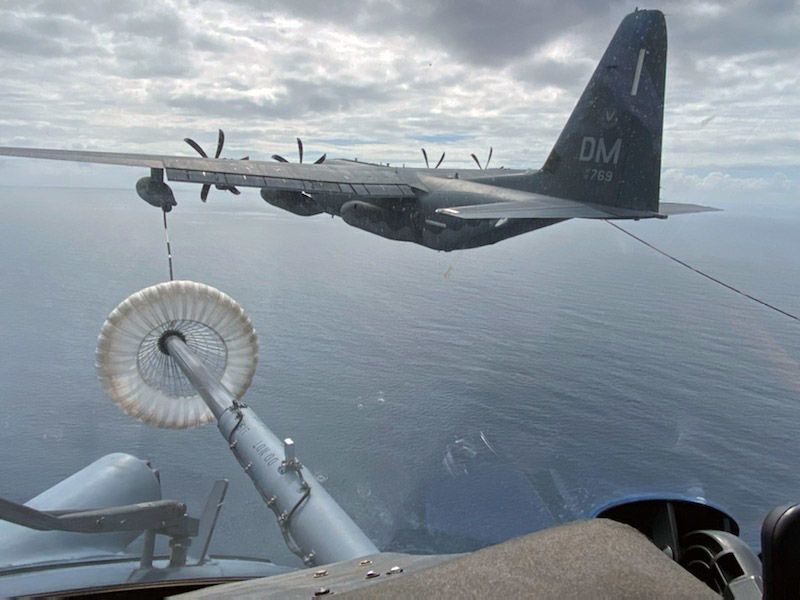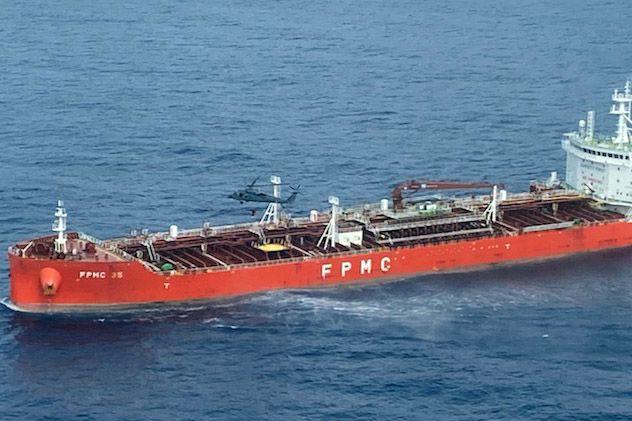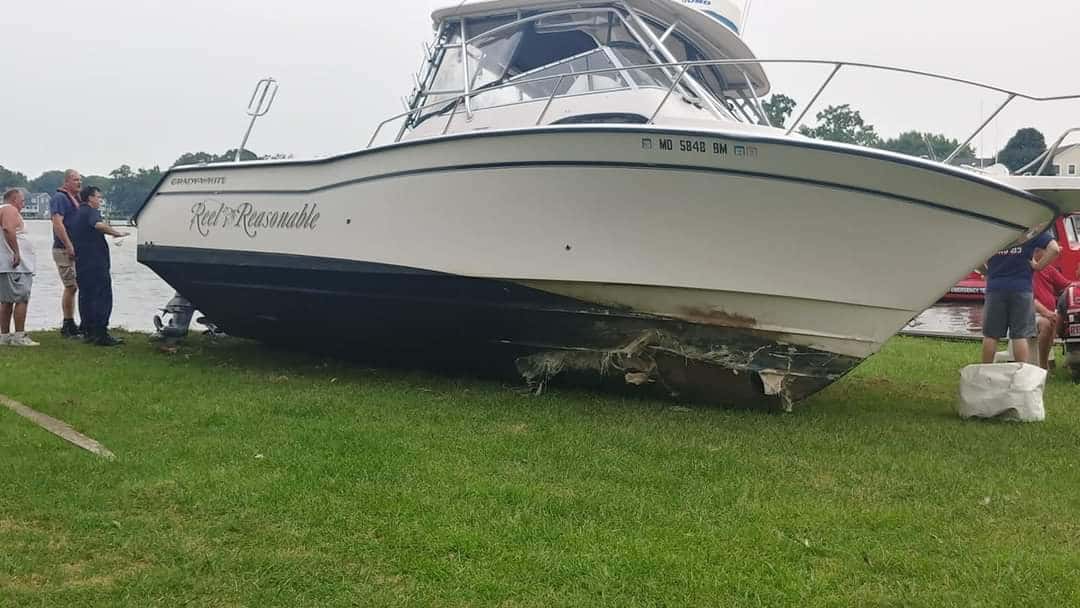A dramatic offshore rescue operation was recently conducted following the Pacific Cup Race, the 2,070-nautical mile race run every other year between San Francisco Bay and Kaneohe Bay on the island of Oahu. A minor injury onboard one of the returning sailboats led to a coordinated effort between race participants, the U.S. Coast Guard, the U.S. Air Force, a Taiwanese tanker, and even maritime medical experts here in the Chesapeake Bay region.
Skipper Andy Schwenk, 57, competed in the 2022 Pacific Cup onboard his Express 37 Spindrift V. Schwenk has made the trip from California to Hawaii more than 50 times since 1982, and has over 300,000 nautical miles under his offshore belt. He is a marine surveyor, owned a rigging shop for 20 years, and is a former Army Ranger.
“Andy’s as competent as they come,” says Pacific Cup PRO Michael Moradzadeh, who has been involved in the management of the race for the last two decades. “He’s done this race so many times, he’s the go-to guy for anything.”
This year’s race started in light wind. Spindrift V crossed the finish line without incident on July 18 after 13 days at sea, winning her division.
But offshore sailors know that it’s not just about getting to the destination: it’s about getting home as well. Spindrift V started her passage home knowing that there were a few problematic weather cells on the radar, but the delivery crew was in their element, and several other race participants were heading back at the same time.
Before she was halfway home, Spindrift V encountered some significant weather and was hit by what crewmembers identified as a rogue wave.

The wave split the mainsail and took out the boat’s Automatic Identification System (AIS), disabling their primary communications. Schwenk received what another crewmember called a “fiberglass injury;” a somewhat significant cut on his ankle from the boat.
“After that long at sea, these boats aren’t the most hygenic,” Moradzedeh says. Connecting over email, Schwenk reported that Spindrift V had antibiotic gel and bandages onboard, and that the injury was being addressed.
Within hours, however, an infection developed in Schwenk’s leg. “Because Andy’s AIS communication was damaged, we were trying to communicate over email,” says Moradzedeh. “The whole fleet was good about monitoring email regularly and checking in with me at least daily, but Andy’s laptop had been damaged by water and he was having a harder time with communication. It was becoming clear that once-a-day check-ins weren’t going to be enough.”
Moradzadeh relayed with other Pac Cup finishers to find antibiotics on the water, hoping to get Andy the extra help he needed. Pac Cup organizers were working with the George Washington University’s Maritime Services medical group in D.C., who offer remote medical services for offshore races. Doctors at GWU consulted on Andy’s injury and attempted to help him treat it. Schwenk was trying to send photos of his injuries, but information was not getting through due to the computer’s damage.
Robin Jeffers was skippering Surprise, a 46-foot custom Schumacher, and had antibiotics onboard. Moradzedeh was able to connect Surprise and Spindrift V and transfer antibiotics to Schwenk.
But 12 hours later, it was clear that the infection had outpaced the medications’ abilities.
“At this point, the consideration for an evacuation became a request,” Moradzadeh says. The Coast Guard’s 11th District, which oversees emergency responses for California, Arizona, Nevada, and Utah, took on the evacuation effort. there wasn’t a good option for a rendezvous point between them. Andy had to get closer to San Francisco, but Spindrift V was still over 1000 nautical miles out.
The best answer came in the form of a Taiwanese tanker en route to Panama. At roughly 1 a.m. on Friday, August 5, the crew of Spindrift V watched as the Taiwanese tanker pulled up next to the sailboat. “Andy said he heard Chinese voices, and then this rope just dropped down to the cockpit,” says Moradzadeh. Schwenk tied two loops around himself and allowed the crew to pull him up.
That same night, the Coast Guard launched a cargo aircraft with a Guardian Angel pararescue team onboard. Early Friday morning, the cargo aircraft connected with the tanker, but rough seas made the rendezvous difficult.
“Traditionally we have at least four guys on this,” said U.S. Air Force Senior Airman Bryan, one of the senior pararescuemen involved, in a later statement. “But due to the waves and the ship’s recovery boat breaking down, we were only able to jump two guys. Then, it was difficult to connect the ship’s hoist to the tiny recovery boat due to 10-foot waves and a weak engine.”
Bryan and his partner clung to the side of the recovery boat and were pulled 40 feet out of the water, then worked for 24 hours to stabilize Schwenk’s injuries with antibiotics, pain management, and wound treatment.
The next leg of the rescue mission involved a coordinated effort between the Taiwanese tanker, the U.S. Coast Guard, and the U.S. Air Force. Schwenk and the two airmen were put into baskets and hoisted from the ship and into an Air Force helicopter, where he was then transferred to Moffett Airfield before traveling to Stanford University Hospital.
Schwenk is expected to remain in the hospital recovering for another two weeks. Spindrift V completed her journey home on Friday, August 12, and landed safely in San Francisco.
Moradzadeh offers his reflection on what went right to get Schwenk home safely.
“The biggest thing was that no one panicked,” he says. “There were so many opportunities for something to go wrong, but because everyone was calm and professional, we were able to conduct this rescue without as much alarm as it could have gone.”
Moradzadeh pauses, and then chuckles. “But it really is a crazy story.”
-Duffy Perkins




